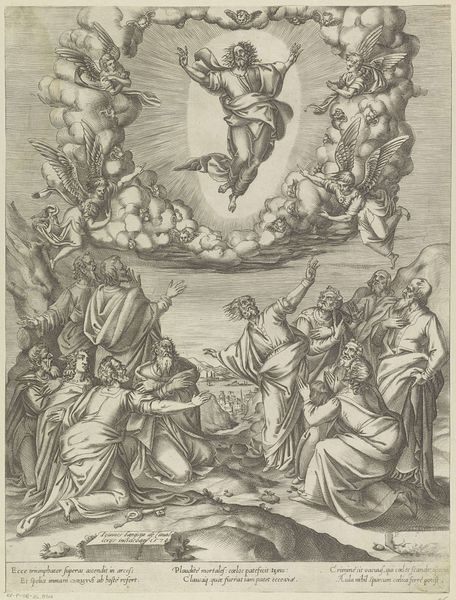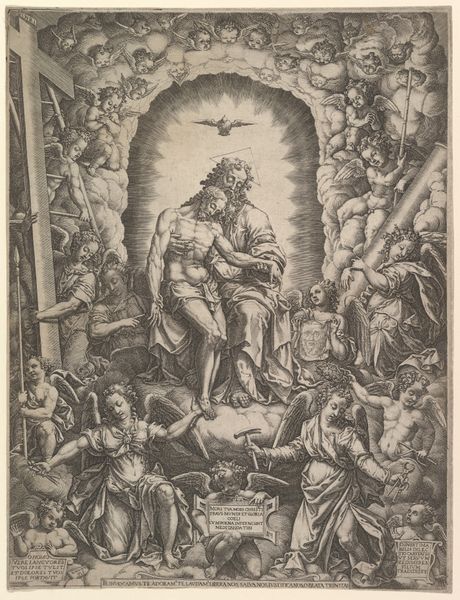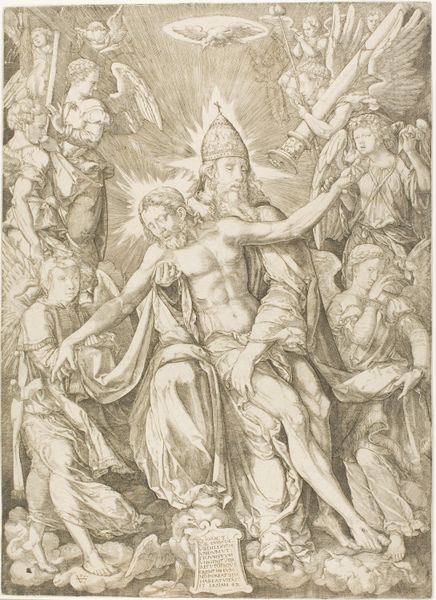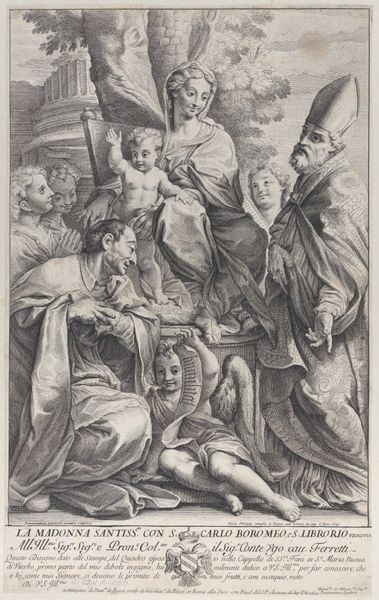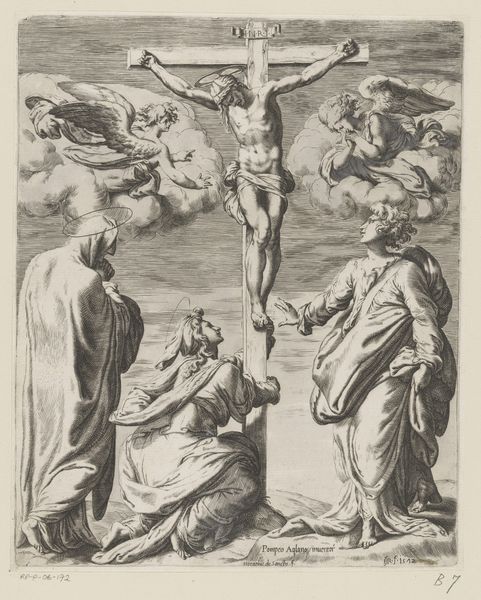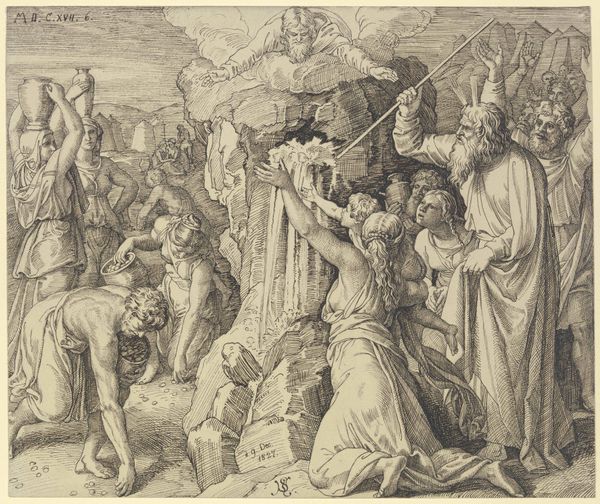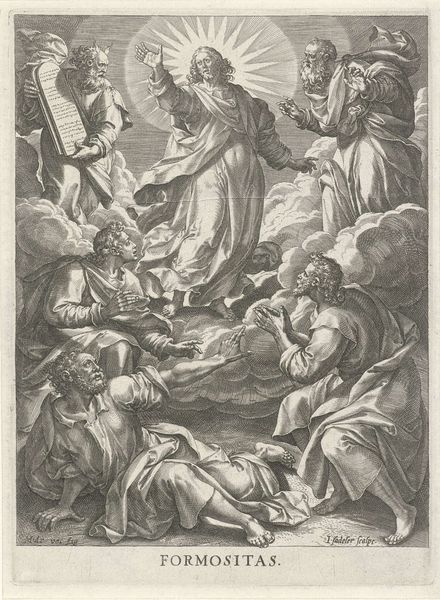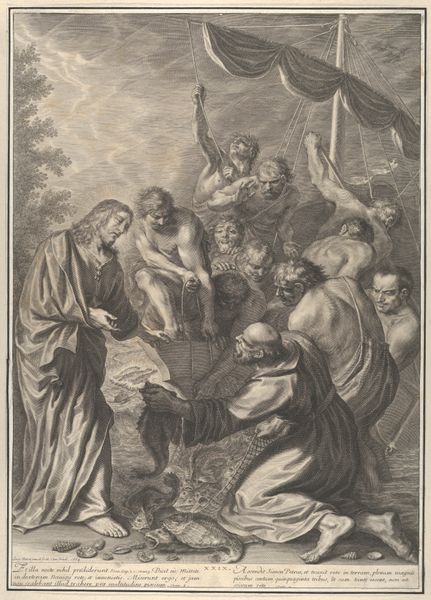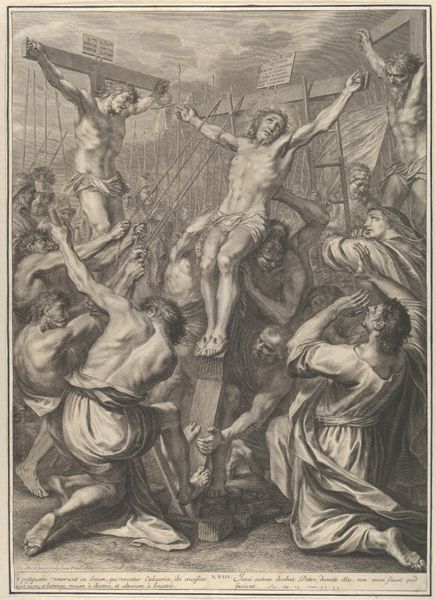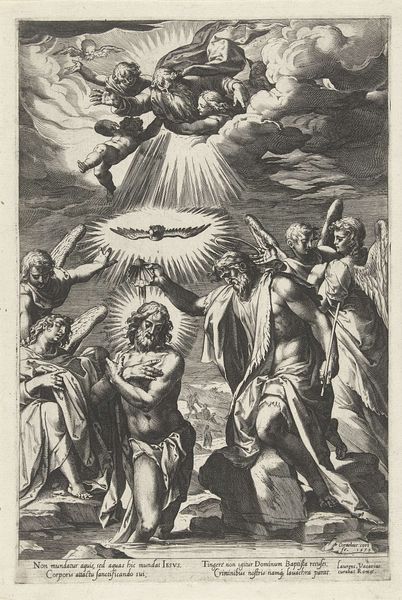
print, engraving
#
allegory
# print
#
figuration
#
history-painting
#
italian-renaissance
#
engraving
#
christ
Dimensions: height 433 mm, width 328 mm
Copyright: Rijks Museum: Open Domain
Curator: This is Domenico Tibaldi's "Hemelvaart," or "Ascension," an engraving dating back to 1588. What strikes you about it? Editor: The sheer drama! The dynamism achieved through purely linear means is quite remarkable. There’s a clear visual hierarchy at play. Curator: Indeed. Note how Tibaldi uses contrasting densities of line to create tonal variation. The figures, particularly Christ, are bathed in light achieved by hatching and cross-hatching, creating a luminous effect. This speaks to Renaissance interests in ideal forms and divine light. Editor: Absolutely, and I would argue the subject matter further enforces a patriarchal, colonial worldview. We see an all-male cast, predominantly white, witnessing an ascension, reinforcing existing power structures. Curator: While I see your point, observe also the individualized expressions and gestures of the apostles. Tibaldi’s skill lies in his capacity to imbue each figure with unique emotion and a sense of astonishment. The work masterfully encapsulates a moment of spiritual transcendence. Editor: The representation of spiritual experiences are of course culturally loaded. Note how even their emotional reactions are coded and limited within the artistic convention. Moreover, the keys at Peter's feet denote an unbroken papal lineage and inherent political authority. It’s about power. Curator: It is interesting to consider those symbols within that framework. The composition uses classic techniques to create a convincing, idealized representation of space. Christ rises on the clouds; angels flank him—a complex choreography, flawlessly executed. Editor: Precisely, which is why it is crucial to challenge the narratives reinforced through artistic mastery. We need critical perspectives, not mere acceptance of established norms, especially given the ongoing implications of those beliefs for marginalized communities globally. Curator: Thank you. Examining both the aesthetics and ideology certainly allows for deeper insights. Editor: I agree. By acknowledging those deeper dynamics, we’re able to see so much more than form or narrative; we discover its place in the world.
Comments
No comments
Be the first to comment and join the conversation on the ultimate creative platform.
